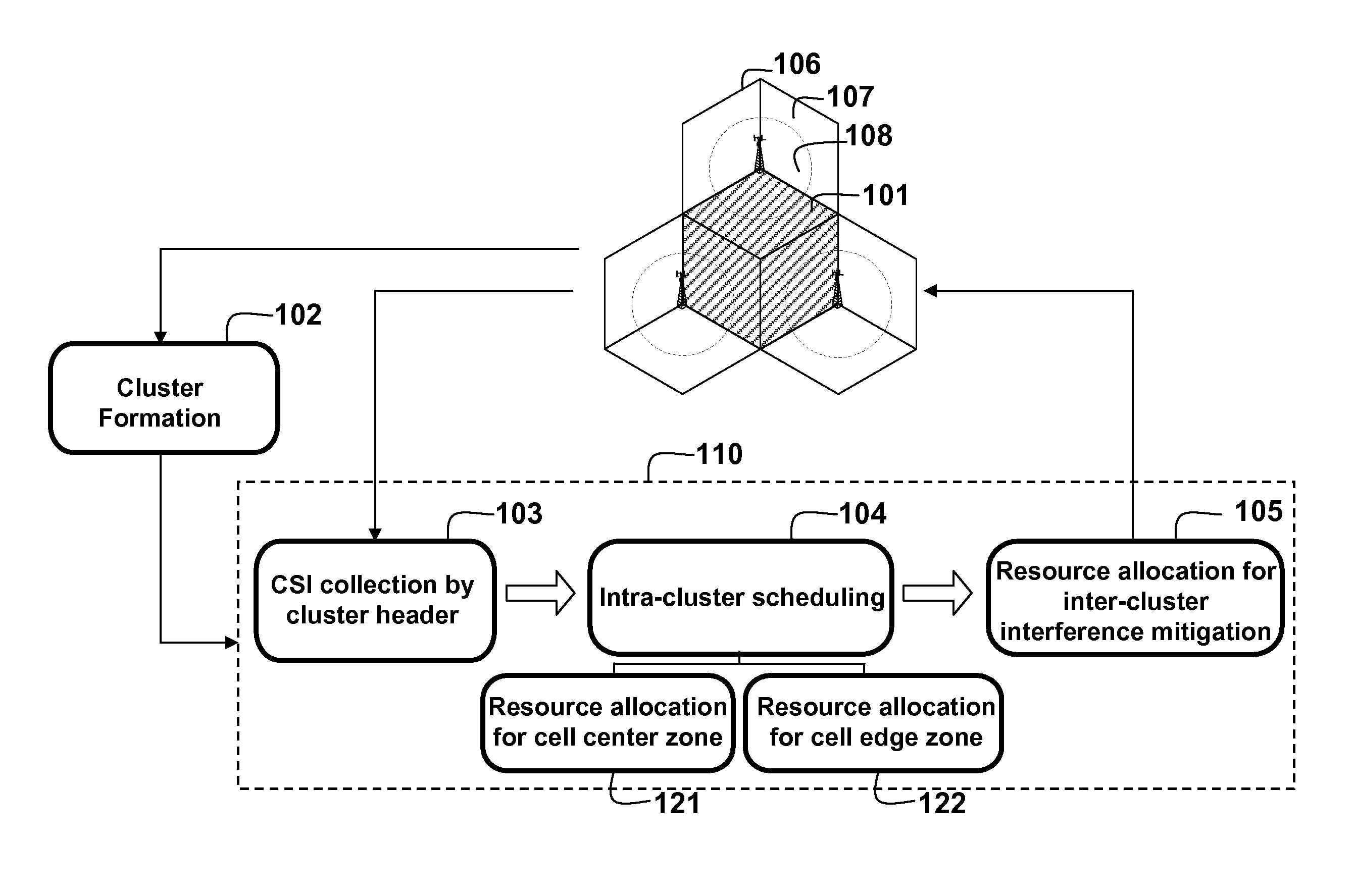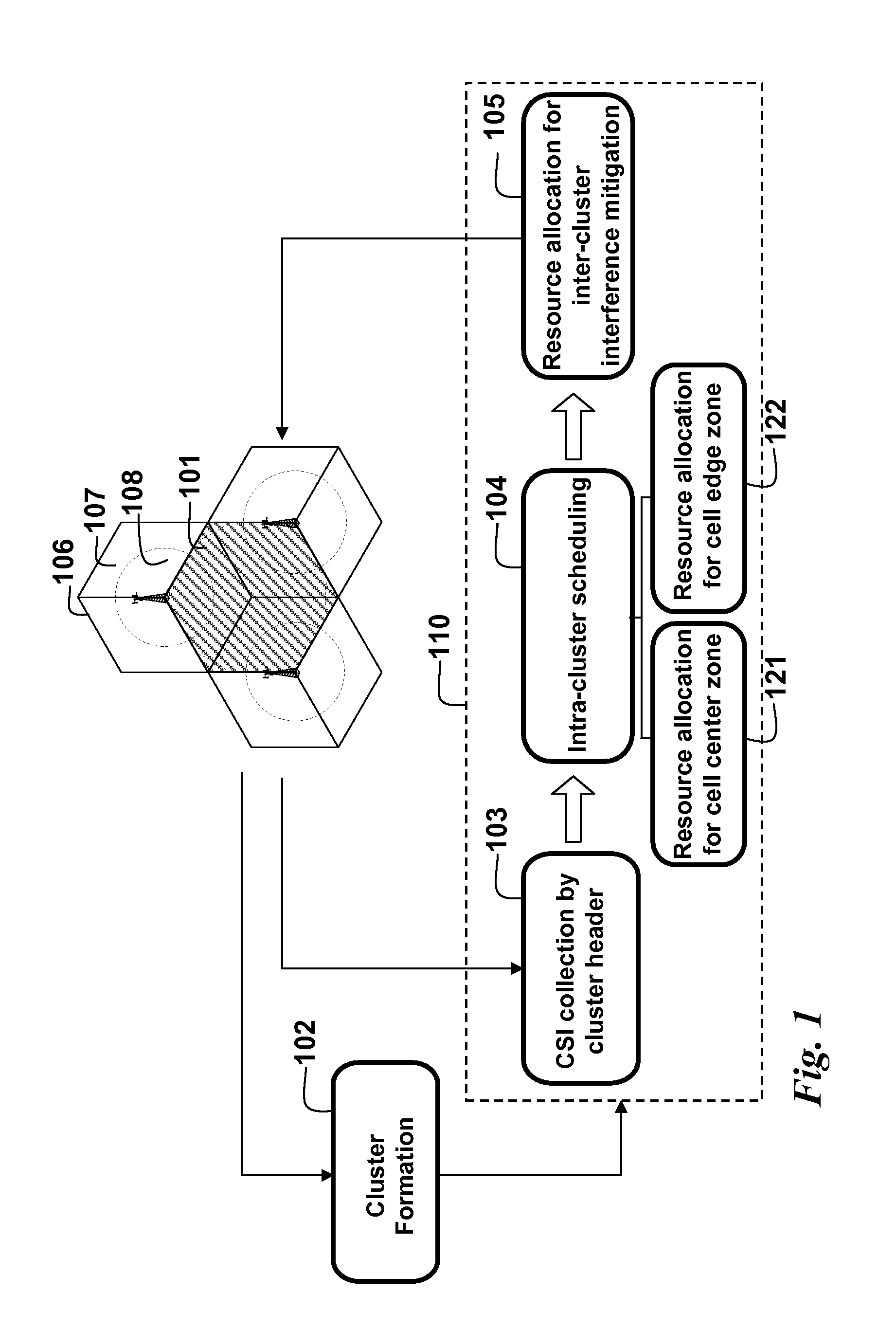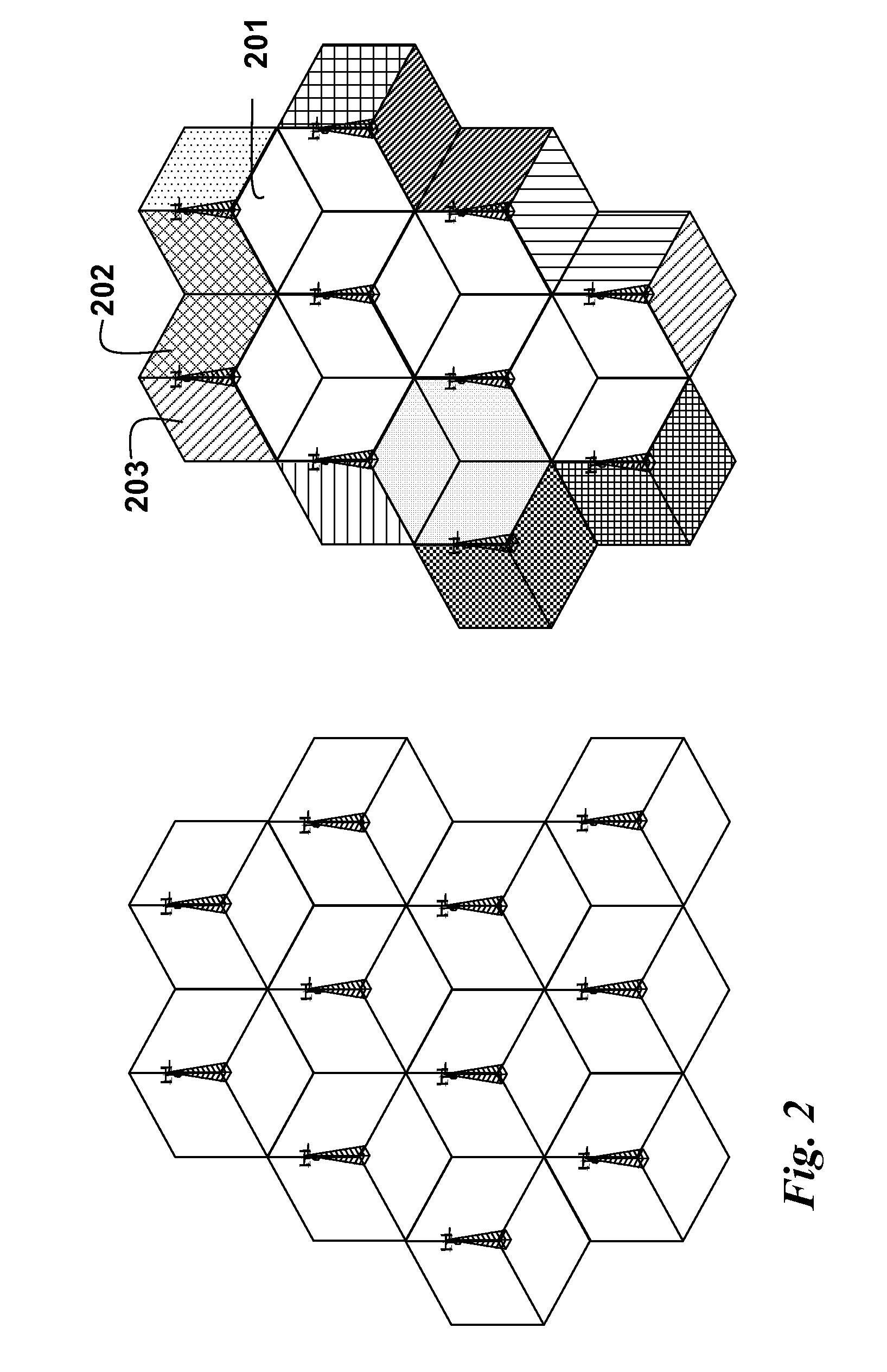Clustering Based Resource Allocation in Multi-Cell OFDMA Networks
a resource allocation and multi-cell technology, applied in wireless communication services, electrical equipment, wireless commuication services, etc., can solve the problems of inability to effectively avoid or reduce inter-cell interference, ici is the predominant performance-limiting factor of wireless cellular networks, and inability to meet the needs of users, etc., to achieve the effect of reducing inter-cell interference, avoiding or reducing inter-cell interference, and improving performan
- Summary
- Abstract
- Description
- Claims
- Application Information
AI Technical Summary
Benefits of technology
Problems solved by technology
Method used
Image
Examples
Embodiment Construction
[0035]Clustering Based OFDMA Resource Block Allocation
[0036]FIG. 1 shows a method for resource allocation to mobile stations in an Orthogonal Frequency-Division Multiplexing Access (OFDMA) network according to embodiments of our invention. The OFDMA network includes a set of Base Stations (BSs), and each BS is associated with a set of Mobile Stations (MSs) in the cell served by the BS.
[0037]Cluster 101 is formed by the cluster formation process 102. Cluster formation occurs at the initiation of an OFDMA network, and subsequently when the network changes as BSs enter and leave the network.
[0038]Each cell 106 is partitioned into three sectors 107. Each base station 108 has three sets of antennas or antenna arrays to serve the three sectors, respectively. Because the inter-cell interference is more serious where sectors from neighboring cells abut, the adjacent sectors are jointed to form a cluster, shown cross-hatched in the figure. A typical cluster involves three base stations which...
PUM
 Login to View More
Login to View More Abstract
Description
Claims
Application Information
 Login to View More
Login to View More - R&D
- Intellectual Property
- Life Sciences
- Materials
- Tech Scout
- Unparalleled Data Quality
- Higher Quality Content
- 60% Fewer Hallucinations
Browse by: Latest US Patents, China's latest patents, Technical Efficacy Thesaurus, Application Domain, Technology Topic, Popular Technical Reports.
© 2025 PatSnap. All rights reserved.Legal|Privacy policy|Modern Slavery Act Transparency Statement|Sitemap|About US| Contact US: help@patsnap.com



